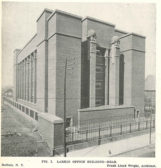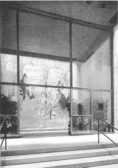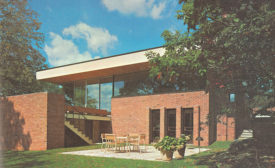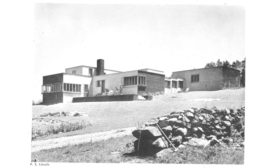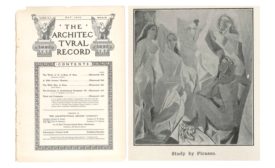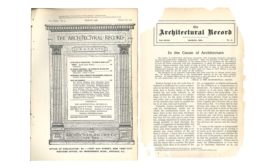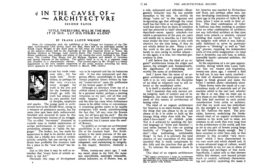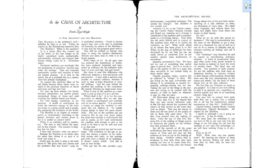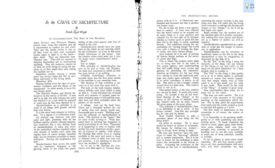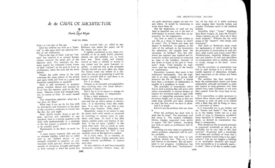From the Vault
Reprinted from the April 1908 edition of Architectural Record.
Read More
More Elegance at the House of Seagram: The Four Seasons Restaurant
Reprinted from the July 1958 issue of Architectural Record.
June 1, 2016
Multi-Level House for a Rocky Hilltop
Reprinted from the July 1964 issue of Architectural Record.
May 1, 2016
House of Rex Stout
Reprinted from the July 1933 issue of Architectural Record.
April 1, 2016
The Wild Men of Paris
Gelett Burgess' influential essay from May 1910 introduced French modern art to the United States.
Read More
In the Cause of Architecture
The first essay of Frank Lloyd Wright's "In the Cause of Architecture" series for Architectural Record.
January 24, 2016
In the Cause of Architecture, II: “Style, therefore, will be the man, it is his. Let his forms alone.”
An essay from May, 1914, by Frank Lloyd Wright.
Read More
In the Cause of Architecture II: The Architect and the Machine
An essay from May, 1927, by Frank Lloyd Wright.
Read More
In the Cause of Architecture, II: Standardization, the Soul of the Machine
An essay from June, 1927, by Frank Lloyd Wright.
Read More
In the Cause of Architecture, III: Steel
An essay from August, 1927, by Frank Lloyd Wright.
Read More
Copyright ©2024. All Rights Reserved BNP Media.
Design, CMS, Hosting & Web Development :: ePublishing
